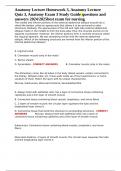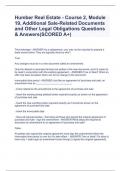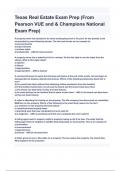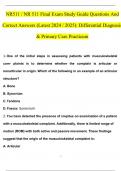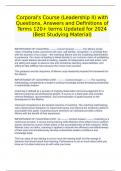Exam (elaborations)
Anatomy Lecture Homework 3, Anatomy Lecture Quiz 3, Anatomy Exam 3 Study Guide questions and answers 2024/2025best exam for nursing
- Course
- Institution
Anatomy Lecture Homework 3, Anatomy Lecture Quiz 3, Anatomy Exam 3 Study Guide questions and answers 2024/2025best exam for nursing
[Show more]
